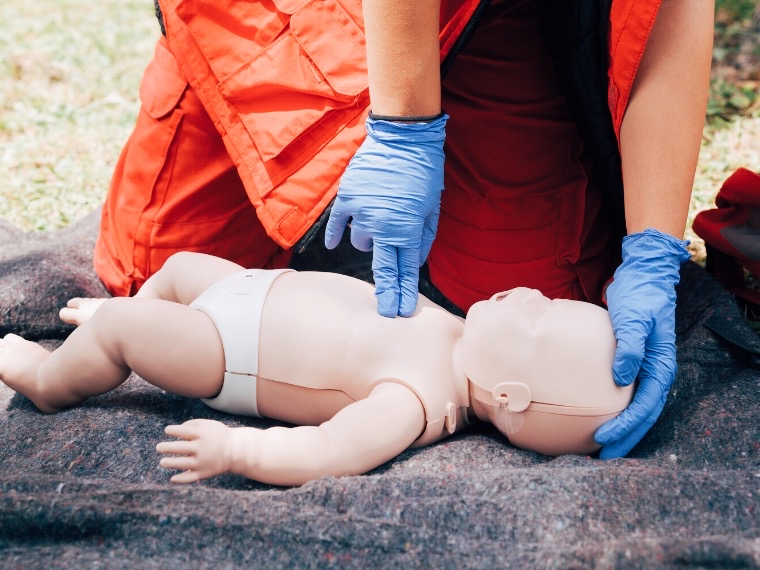Potentially Life-Saving Tips for Parents
November 1, 2019 | by BMI Staff
November is Child Safety Month, and we know that when it comes to the safety of your child, you can never be too prepared. We have some tips for keeping your children safe in the cooler weather, while riding in the car, and when in need of CPR.
Always take your child with you.
With the temperature cooling down and the number of holiday errands on the rise, it may be tempting (and seem safer) to leave your sleeping child in the car for just a quick run into the store. They won’t overheat, so is it really dangerous? The short answer is YES, and there are a number of reasons. If the temperature is low enough outside hypothermia quickly becomes a concern. Infants and young children are more susceptible to this condition than adults. Inversely, while heat stroke may not come to mind during winter, leaving your bundled up babies in a car with the heat running at full blast could result in overheating, as well. When you are not present to control the temperature or hear your child’s distress, there is no way to truly keep them safe. Another risk associated with leaving the car running for small children is carbon monoxide (CO) poisoning. Similar to hypothermia, children are much more susceptible to this ailment, as well. With no odor and sleep-like symptoms, it may not be immediately apparent that your child has CO poisoning. Other hazards outside of weather are power seats and windows, gear shifts, and car thieves who do not realize a child has been left in the vehicle. It is always recommended to take your child with you every time you exit your vehicle.
Learn these car seat safety tips.
When it comes to your child’s well-being, you can never be too prepared. Car accidents are the leading cause of preventable death in children aged 1-13. When buckling your child in, make sure all straps are snugly fastened, and keep your child rear-facing for as long as possible. When they start to get older, don’t move them to a booster seat too quickly. Children are typically large enough at age 4 to move to a booster, but they may not have the maturity required to sit still. Age 6 is recommended for this transition, due to that increased maturity. You don’t want to transition your child out of her booster too early, either. Most children should be 10-12 years old before they are safely able to ride without a booster. The rule of thumb is to ensure your child’s lap belt is positioned on the lower hips when out of the booster. This is the optimal positioning for a car accident.
CPR Procedures for both Children and Infants.
Step 1: Check for Consciousness
For children, begin by attempting to rouse the patient with a gentle shake of the shoulder or arm. For infants, however, shaking is never advised for any reason. Instead, check for consciousness by gently stroking the baby or tapping the soles of the feet.
Step 2: Check for a Pulse:
For children, check next for a pulse. Place two fingers over the carotid artery, which is located on the child’s neck–on either side of the esophagus. For infants, the pulse will be more detectable on the inside of the upper arm.
Step 3: Give Rescue Breaths
For children, airways are going to be rather delicate. When giving rescue breaths, do not tilt the head back too far, and breathe gently. For infants, tilt the head very slightly upward, giving the infant the appearance of someone who is smelling the air. Use your cheeks rather than the full strength of your lungs to give rescue breaths. You may cover both the nose and mouth of the infant with your mouth when giving rescue breaths.
Step 4: Give Chest Compressions
For children, you may use one or two hands to give chest compressions, depending on the size of the child. Make sure compressions are no deeper than one and a half inches. For infants, only use two fingers in the center of the chest and compress no deeper than one and a half inches.








